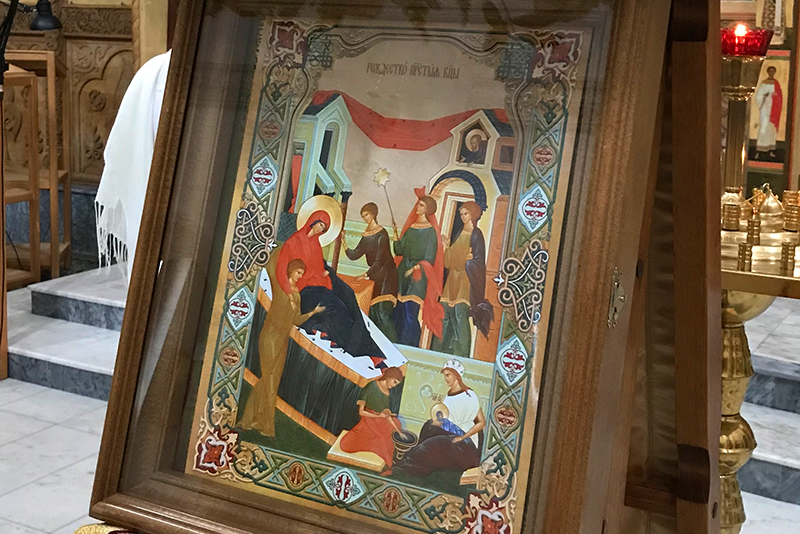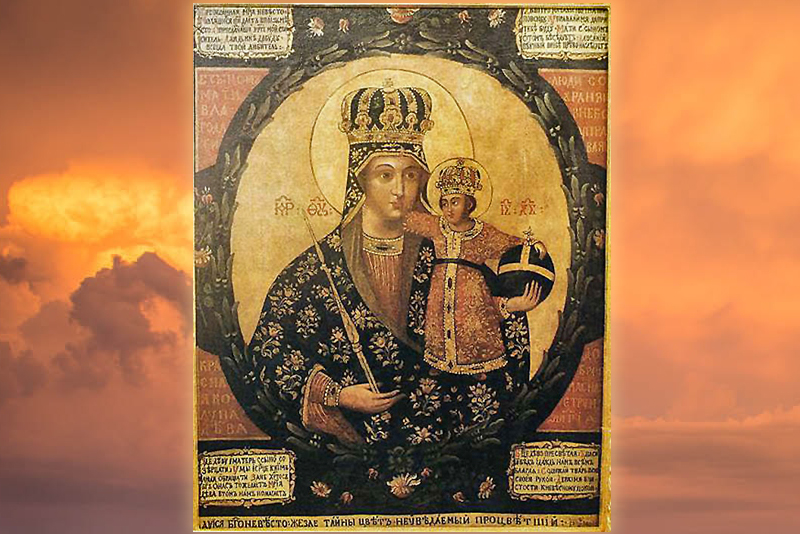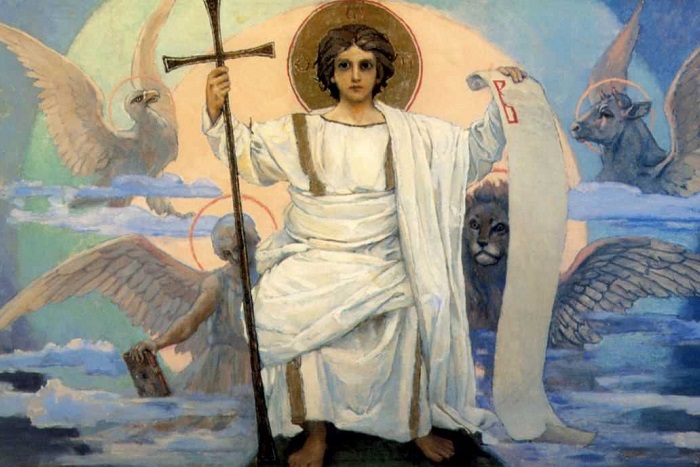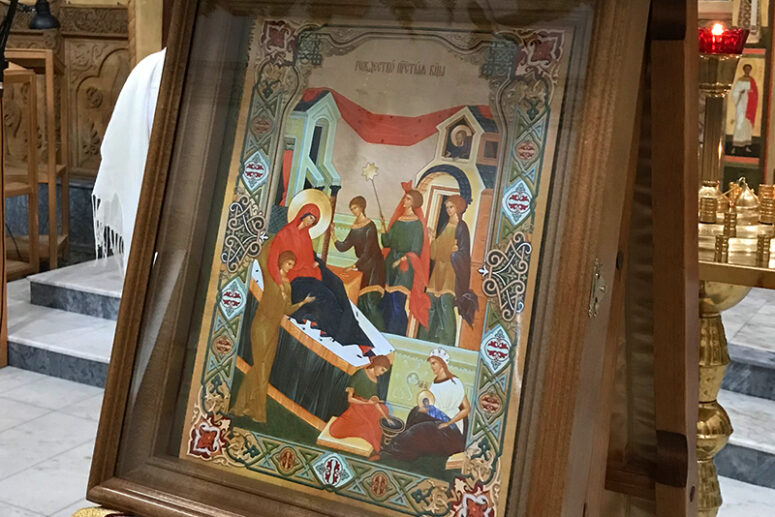
The Holy Scripture of the New Testament says little about the Blessed Virgin and contains absolutely no information about Her Nativity. The church however keeps her Tradition telling us about St Mary’s birth and the life of Her holy parents, Joachim and Anna.
The entire story of the Nativity of the Holy Virgin is revealed in the iconography of this feast, particularly, in three icons. The first one is the icon of the Conception by St Anna of the Most Holy Theotokos, telling us about the events closely associated with / and immediately preceding Her Nativity. The second icon of the Nativity of the Theotokos is the central icon of the feast. The third one is the icon of Mary Caressed by Her Parents; it serves as an “epilogue” to the events associated with the feast. Let’s dwell on the three icons in a bit more detail.
The Conception of the Holy Virgin (The Meeting of Joachim and Anna at the Golden Gate)
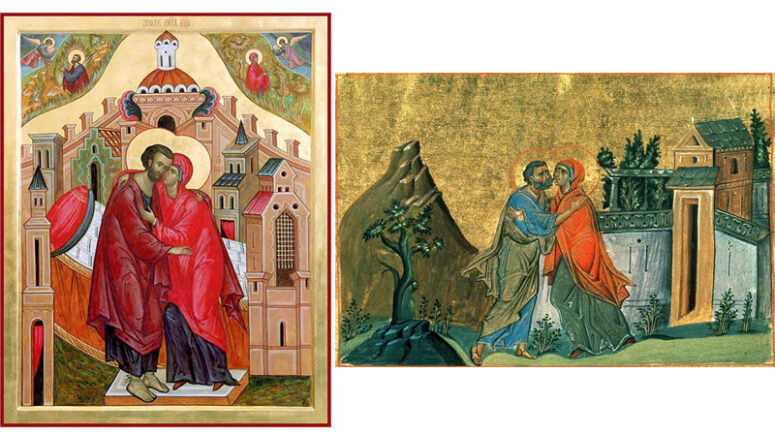
The icon serves as a background to the Feast of Nativity of the Theotokos.
Joachim and Anna did not have children, but they continued to ask the Lord to send them a child. On the upper margins of the icon we can see an angel appearing to both Joachim and Anna and announcing to each of them that God would send them a child that the whole world would speak of. After hearing the good news, Joachim and Anna hurried in joy to see each other, and met at the Golden Gate of Jerusalem. Their meeting is depicted in the icon.
The meeting place of the saints is symbolic, since, according to Jewish tradition, it is the same gate through which the Messiah was supposed to enter Jerusalem, as it is indicated in the book of the prophet Ezekiel 44:2: “The Lord said to me: This gate shall remain shut; it shall not be opened, and no one shall enter by it; for the Lord, the God of Israel, has entered by it; therefore it shall remain shut”. The Church also associates the words of this prophecy with the Theotokos and Her everlasting virginity, in the sense that only the Lord will “enter through those gates” and only the Lord will be born of the Virgin Mary.
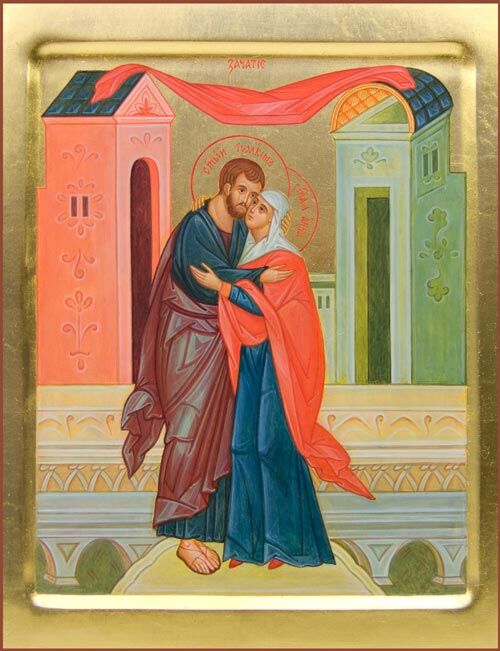
Icon of the Nativity of the Most Holy Virgin
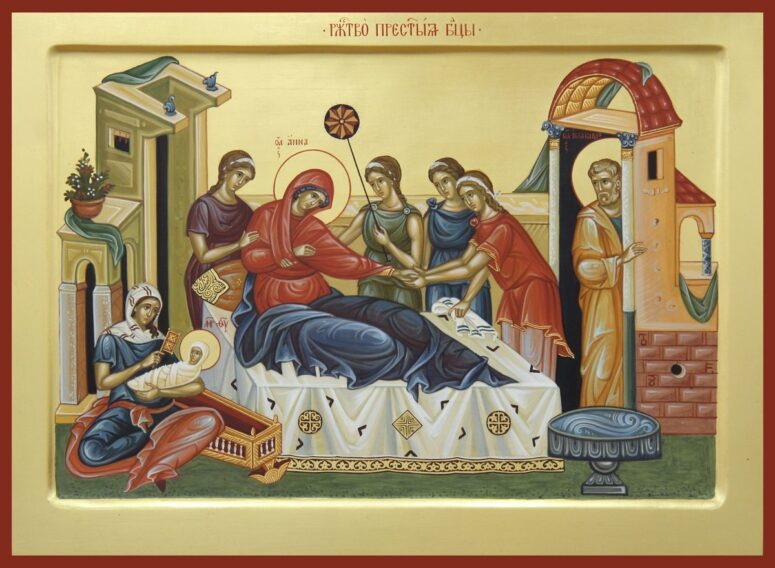

Nine months after the aforementioned meeting, the Blessed Virgin was born.
The icon of the feast depicts the righteous Anna after giving birth, resting on a bed and supported by maids. St Anna is usually portrayed facing the newborn Mary, although some later versions omit this detail, which somewhat belittles the expression of Anna’s love for Mary, originally contained in the icon. St Anna’s friends coming to greet her on the occasion are sometimes depicted holding gifts.
Mary Herself is represented in the arms of a maid preparing a font for ablutions. On some icons, there is a rather delicate and quivering detail: the maid is carefully checking the water temperature before placing Mary in the font.
St Joachim is usually depicted on the very outer margins of the icon (in the doorway or in the window) or not depicted at all. This can be explained by the Jewish tradition of that time, not allowing men to enter the room for some time after childbirth. The fact that Joachim, despite the tradition, is trying to see the child as soon as possible speaks of his strong anticipation. Some medieval icons represent St Joachim immediately next to the bed, which distorts the original idea of the icon.

It is worth noting that depicting childbirth was common for ancient culture. A series of images showing the life course of a particular person were often placed on monuments or tombs. This tradition was also absorbed by Christianity, along with all its characteristic imagery, including the washing of a newborn and a woman in labor on a bed, supported by maids.
Despite the usual strictness and impassivity of the Orthodox iconography, a detailed study of the icon shows that it conveys quite vividly and emotionally the true festive joy experienced by Joachim and Anna after having their long-awaited child.
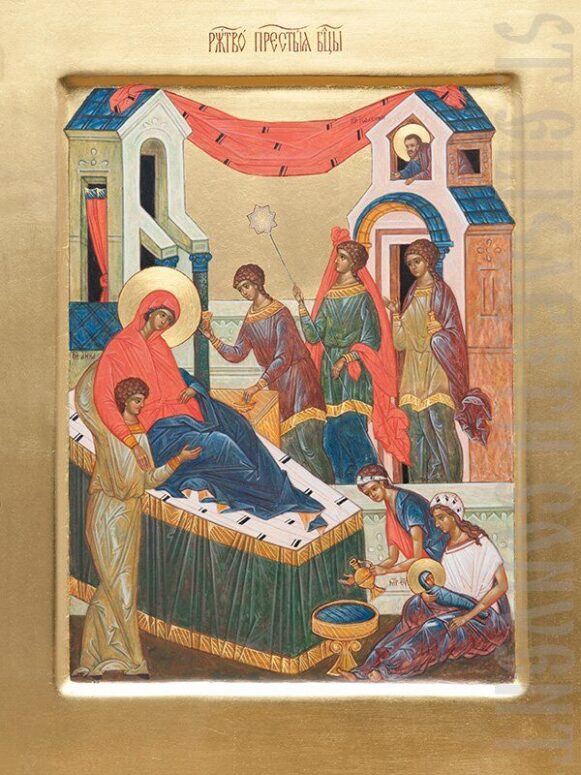
The Most Holy Theotokos Caressed by Her Parents
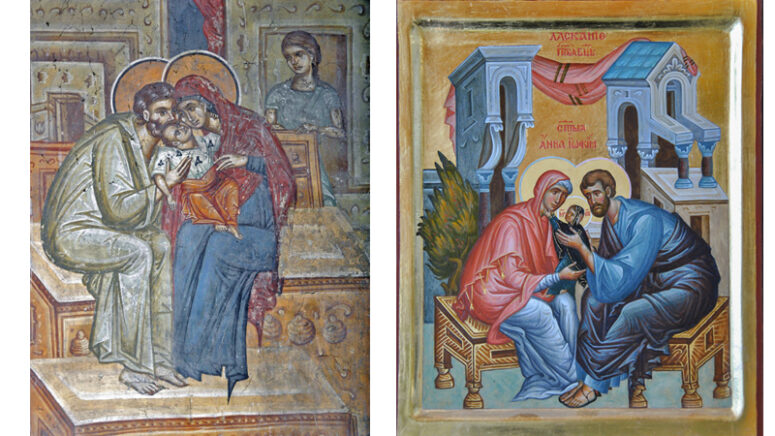
The icon is the culmination of the Nativity story. The parents who have been barren for so long are finally able to hold and cherish their baby. The great joy of having a child is multiplied here by the long anticipation that Joachim and Anna had to come through before they became parents in their advanced years.
This supreme happiness makes the icon one of the most touching works of the Orthodox iconography. Its different versions depict the parents embracing or kissing the infant Mary while She Herself is holding Anna by the neck. Often we can also see a maid admiring the scene.
One of the known iconographic versions contains a highly remarkable detail. Anna is depicted firmly holding the Mother of God in her arms while Joachim is reaching with his arms towards the baby. This can be viewed as a scene observed in families where one of the parents simply cannot have enough communication with the child and therefore hesitates to hand it over to the other.
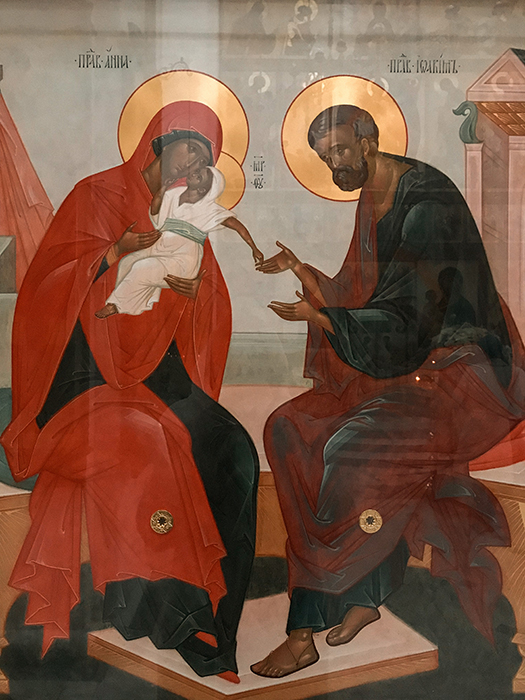
Conclusion
Although the Holy Scriptures do not carry any information about Mary’s birth, the Tradition and its visible expression through iconography brings us closer to understanding the Nativity of the Holy Virgin as a precious pearl in sacred history, comparable to the events recorded in Scripture. The special attitude of the church towards this feast becomes obvious when we study its iconography, conveying to the beholder the most reverent and humble feelings.

